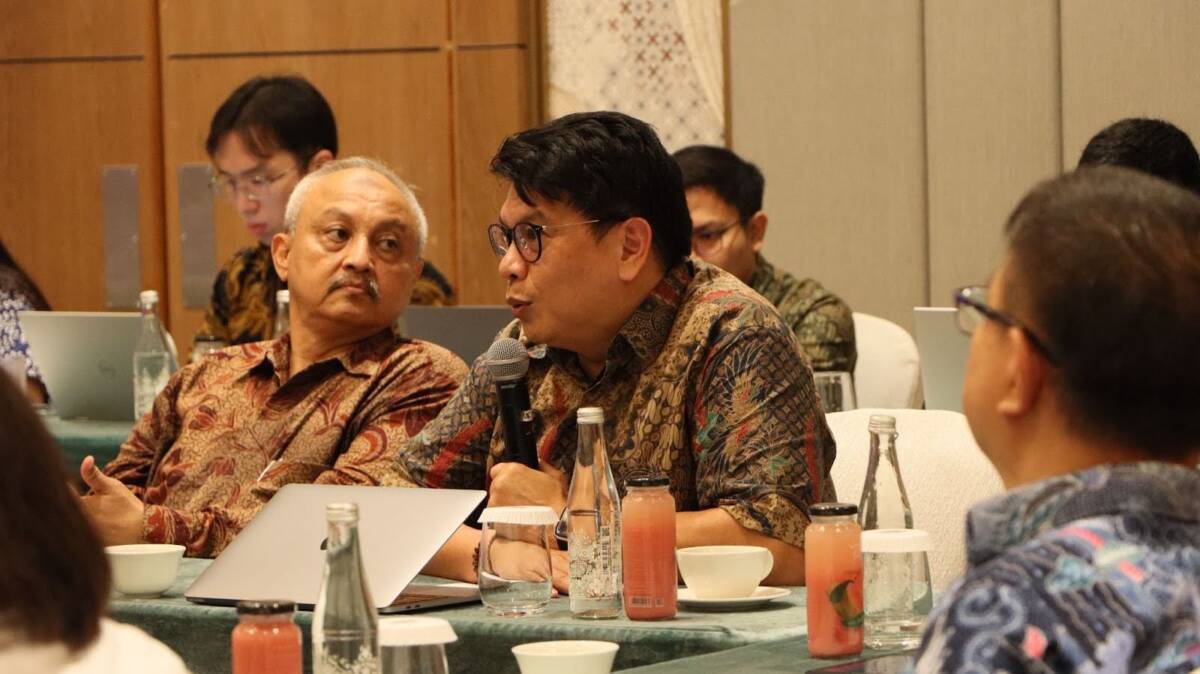Jakarta, July 17, 2024 – Solar energy has become a cornerstone in various roadmaps for Indonesia’s power sector due to its abundant potential. According to an analysis by the Institute for Essential Services Reform (IESR), Indonesia has a solar energy potential of nearly 20,000 GWp, considering land suitability. The IESR’s Deep Decarbonization study shows that Indonesia can achieve net-zero emissions by 2050 and 100 percent renewable energy by 2040, with solar power plants (PLTS) comprising 88 percent of the energy mix. In the Net-Zero Emission (NZE) 2060 roadmap issued by the Ministry of Energy and Mineral Resources (MEMR) and the International Energy Agency (IEA), PLTS also dominates, reaching 421 GW by 2060.
To meet these ambitious targets, the government and the National Electricity Company (PLN) are pushing the development of PLTS in Indonesia through various priority programs, including the National Strategic Program (PSN) for rooftop solar and the Electricity Supply Business Plan (RUPTL) 2021-2030. The RUPTL includes 4.7 GW of PLTS, with some projects already in the procurement phase.
To promote sustainable energy in Indonesia, IESR held the “Roundtable Dialogue: Solar Supply Chain Development in Indonesia” in June 2024. This event was attended by industry players and featured speakers from the National Research and Innovation Agency (BRIN), the founder of ATW Group, and an expert from the Ministry of Energy and Mineral Resources (MEMR) to discuss the challenges and opportunities in developing the solar power industry in Indonesia.
Fabby Tumiwa, Executive Director of IESR, emphasized the crucial role of renewable energy in achieving energy sustainability in Indonesia. He noted that PLTS has seen significant advancements, with costs dropping by 90 percent, efficiency increasing, and high adaptability.
“The transition to the Net-Zero Emission (NZE) target by 2060 heavily relies on the development of PLTS,” Fabby stated. “However, the current Domestic Component Level (TKDN) policy for solar modules faces challenges. While some manufacturers achieve 40 percent local content, many do not meet the Tier 1 standards required by foreign funding agencies, hindering PLN’s target of 2 GW for PLTS development.”
Arya Rezavidi, Chief Engineer at BRIN, highlighted that while Indonesia has a solar module manufacturing industry, solar cells are still imported. The government’s target for solar energy capacity by 2060 is 421 GW, but the local market has not developed sufficiently to support this target.
“The production scale in Indonesia is smaller, making production costs higher compared to products from China. Indonesia needs to develop its industry to compete with foreign products, especially from China,” Arya explained. “Some Chinese factories have moved their production to Indonesia to utilize export quotas to the US, such as LESSO with a capacity of 800 MWp per year, Trina Mas Agra launching next year, and Ali Solar Cell Batam.”
Arya also mentioned that imported modules must pass SNI IEC 61215 certification at BRIN’s lab, which has long queues. He expressed concern that Indonesia might become a relocation site for factories without owning the technology. The government should require foreign companies building factories in Indonesia to involve BRIN in research and development (R&D).
“The current TKDN calculation needs to change to accommodate new categorization, including R&D in the calculation like electronic devices. The TKDN regulations should promote national industry growth, not just limit imports,” Arya asserted.
Antonius Weno, founder of ATW Solar, discussed his company’s long-term contract with Summarecon for a total capacity of 5000 units, though only a small part has been utilized. He highlighted the thin profit margins for Engineering, Procurement, and Construction (EPC) and investors’ reluctance due to PLN’s low subsidized electricity rates, which extend the payback period for solar energy investments.
On the other hand, Sripeni Inten Cahyani, an expert from the Ministry of Energy and Mineral Resources, emphasized the importance of market segmentation. Identification of private and captive markets through the Electricity Supply Business Plan (RUPTL), as well as expansion to industrial estates or special economic zones.
“The integration of supply and demand in the solar PV industry supply chain is very important so that production can be directly absorbed. We also need to calculate clear cost and benefit for incentives and non-fiscal relief. In addition, we must work with financing institutions to support domestic products that have TKDN,” she said.

